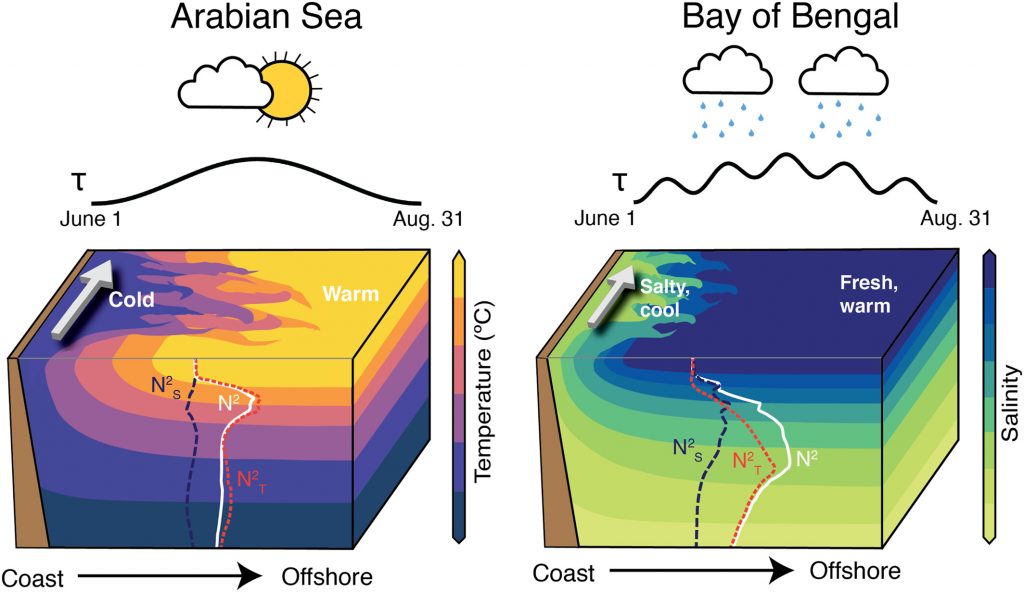Abbott, K., Mahadevan, A. (2024). Why Is the Monsoon Coastal Upwelling Signal Subdued in the Bay of Bengal?; Journal of Geophysical Research: Oceans, 129(12), e2024JC022023. https://doi.org/10.1029/2024JC022023

Figure provided by Katy Abbott.
A conceptual schematic of how the surface signature of upwelling differs in the western coastal Arabian Sea (left) and Bay of Bengal (BoB) (right). In the AS, alongshore winds are typically upwelling-favorable for the duration of the Southwest Monsoon (June-August, JJA), and coastal upwelling brings cold waters to the surface as a result of the temperature-controlled density structure in the upper 150 m. In the BoB, alongshore winds show much greater intraseasonal variability, and while winds are still upwelling favorable, the region experiences a higher frequency of wind relaxation during JJA. Because stratification is controlled by salinity near the surface, upwelled waters are salty and only somewhat cooler than surface waters, so the sea surface temperature (SST) signature of upwelling is small in comparison with the AS. These differences in stratification are quantified by calculating the thermal and haline components of the buoyancy frequency. The average near-coast profiles of the buoyancy frequency (white solid line), thermal component of the buoyancy frequency (red dashed line) and haline component of the buoyancy frequency (dark blue dashed line) are plotted for JJA. A consequence of the very different summertime SSTs in the two basins is that deep moist convection only develops over the BoB, increasing cloudiness. Clouds obscure infrared SST measurements and likely lead to an underestimate of upwelling magnitude in satellite SST products, an effect that would be magnified in the BoB.
